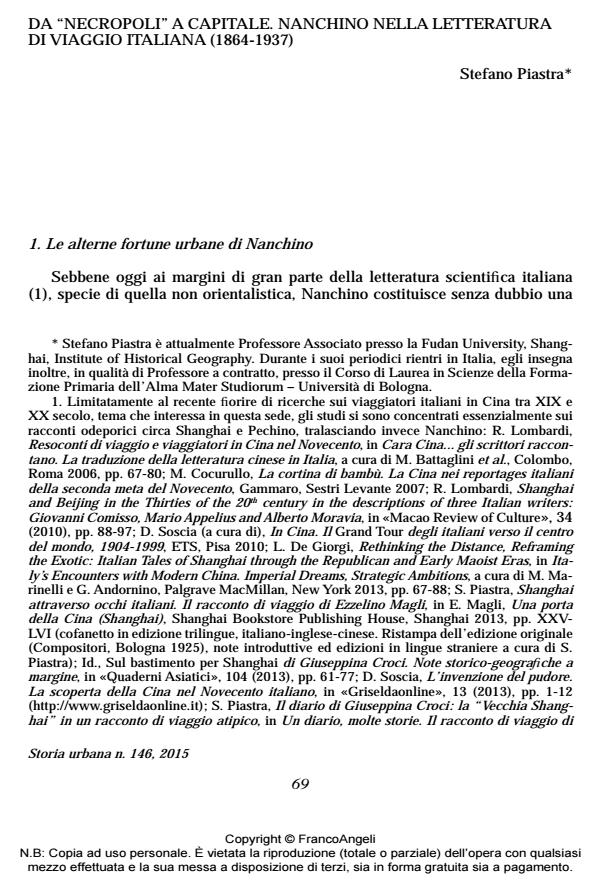From "necropolis" to capital city. Nanjing in Italian travel literature (1864-1937)
Journal title STORIA URBANA
Author/s Stefano Piastra
Publishing Year 2015 Issue 2015/146 Language Italian
Pages 25 P. 69-93 File size 179 KB
DOI 10.3280/SU2015-146004
DOI is like a bar code for intellectual property: to have more infomation
click here
Below, you can see the article first page
If you want to buy this article in PDF format, you can do it, following the instructions to buy download credits

FrancoAngeli is member of Publishers International Linking Association, Inc (PILA), a not-for-profit association which run the CrossRef service enabling links to and from online scholarly content.
Nanjing, capital city under the Ming Dynasty, in the 19th century was involved only slightly in the process of penetration of western countries in China after the First Opium War (1839-1842). With the Taiping Rebellion, Nanjing became the capital city of the self-proclaimed ‘Heavenly Kingdom’, but this was an ephemeral period, because the reconquest of the city by the Qing troops (1864) caused huge destructions in the urban area. Starting from this phase, Italian travel reports are available: they describe Nanjing as a ghost city, characterized by ruins and rural zones inside the walls. Further urban destructions took place in the context of the Xinhai Revolution (1911-1912), which led to the proclamation of the Republic of China, with Nanjing as capital city in an early stage. Now, several Italian travellers, journalists mainly, came to this city under the fascination of the new republican deal and the fi gure of Sun Yat-sen: these travel reports developed a ‘decadent myth’ regarding Nanjing, outlined as a city with an ineluctable destiny of cyclical devastations. Between the 1920s and the 1930s, such a perception changed completely. In 1927 Chiang Kaishek moved again the capital city to Nanjing, which now became, in the eyes of the Italian travellers (usually, in this phase, fully involved in Fascism), the ‘newly born’ capital of Nationalist China: a growing city, whose construction sector was booming thanks to Kuomintang. Later, Second Sino-Japanese War (1937) and WWII ended dramatically this period.
Keywords: Cina Nanchino Letteratura di viaggio italiana Rivoluzione Xinhai
Stefano Piastra, Da "necropoli" a capitale. Nanchino nella letteratura di viaggio italiana (1864-1937) in "STORIA URBANA " 146/2015, pp 69-93, DOI: 10.3280/SU2015-146004